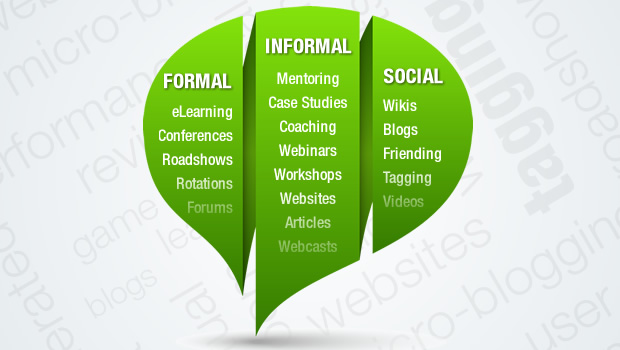In his book, Flat Army: Creating a Connected and Engaged Organization (Wiley, 2013), Dan Pontefract defines ‘Pervasive Learning’ as:
“learning at the speed of need through formal, informal and social learning modalities”
(I got the above definition from Dan’s blog, the book is still on my ‘to read’ list.)
A powerful thought indeed. The idea of pervasive learning has been around for sometime and makes perfect sense as more and more of us become concept workers and work and learning merge. I believe emerging technology is helping pervasive learning to happen more effectively and will continue to impact positively. I have noted this in an earlier post on how mobile enables informal learning.
Dan likens his idea of Pervasive Learning with Charles Jennings’ 70-20-10 Forum mission. To me the two look well aligned until you take the ratios in the 70-20-10 method too seriously. As Donald Clark points out in this article, the 70-20-10 model may not be universally applicable to all staff and there’s not enough research to back the exact percentages. He talks of the ‘10% amplifier effect’, emphasizing the importance of formal training.
“This amplifier effect works because each hour of formal learning spills over to four-hours of informal learning for a 4:1 ratio (Cofer, 2000). Bell (1977) used the metaphor of brick and mortar to describe this relationship of formal and informal learning—formal learning acts as bricks fused into the emerging bridge of personal growth, while informal learning acts as the mortar, facilitating the acceptance and development of the formal learning.”
Not surprisingly Donald and I prefer Dan Pontefracts’ 3-33 Pervasive Learning model over the 70-20-10 model. Donald writes –
“…3-33, which stands for 33% of the learning is formal, 33% is informal, and 33% is social. What is most interesting is that the research behind his model revealed that when the learners were asked to give the percentages on how they thought they learned, the numbers were very different than when the researchers actually discovered how the learners did indeed learn. This coincides with other research that indicates what learners are able to judge about their learning experiences (see Learner Self-Assessment Ratings). Pontefract 3-33 approximation is a Pervasive Learning model – learning is a collaborative, continuous, connected, and community-based growth mindset:”
Source – http://www.knowledgejump.com/web_pics/PervasiveLearning_all.PNG Which model do you think applies better to pervasive learning?
















